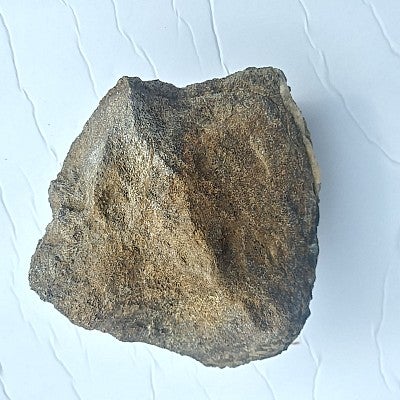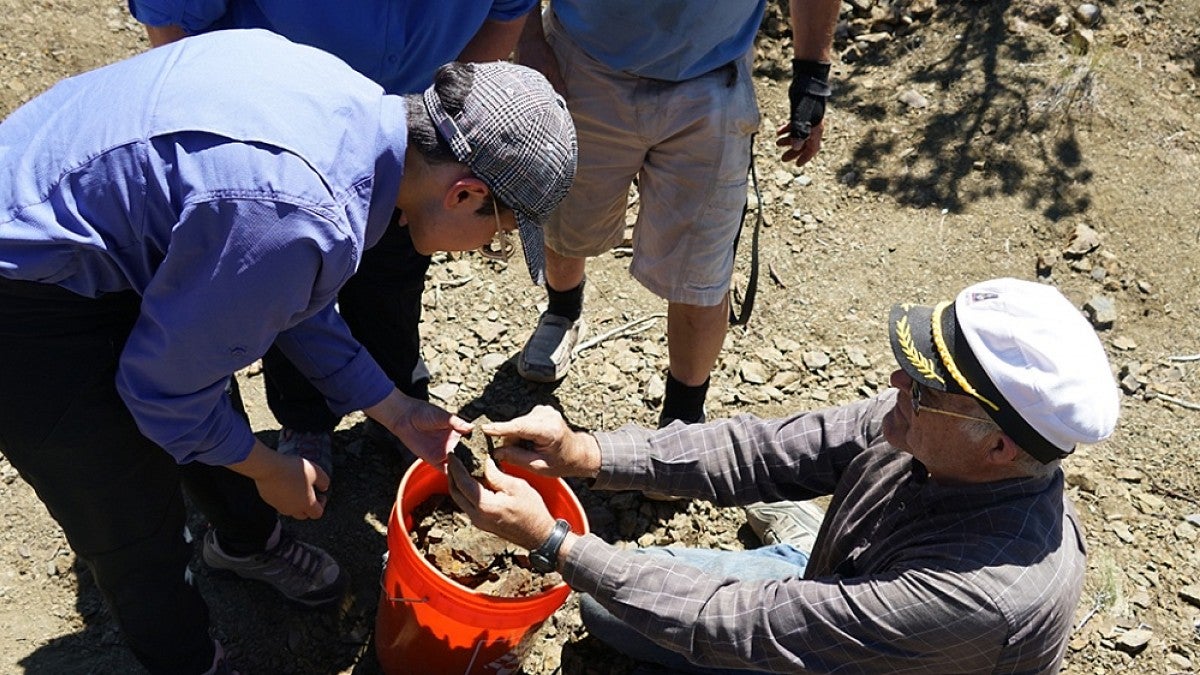Just three years after reporting the first-ever dinosaur fossil in Oregon, a team of excavators led by a UO geologist has uncovered a second bone, this one 103 million years old, at a quarry on public lands near Mitchell in Eastern Oregon.
UO geology professor Greg Retallack said the find comes as another surprise in a state long thought to be dinosaur-free.

The first fossil, uncovered during a 2015 student field excursion focused on fossil plants, was a toe bone belonging to a 20-foot long plant-eater known as an ornithopod. Among the new fossils is a vertebra, likely from the same species, though it’s unclear whether it belonged to the same individual animal.
“We hypothesized that the toe bone had arrived in Oregon due to a case of ‘bloat-and-float,’ where the dinosaur died on land then washed out to sea, bloated with decomposition gasses and floated along until it burst, eventually falling to the sea floor,” Retallack said.
Retallack said that while the bloat-and-float model would explain the presence of one ornithopod remnant, the additional find and its surrounding material suggest that another process may have been at work.
“The vertebra was lodged in a strange conglomerate of pebbles, shell fragments, and compressed tree trunks that are up to a foot in diameter and 10 feet long,” he said. “Based on the direction of the tree trunks, this appears to have been an ancient mudflow from land that was mobilized by a storm and pushed out into the sea.”
Arranged by Retallack and Bureau of Land Management archaeologist Ryan Griffin and led by the North American Research Group’s Greg Carr, the dig was a collaboration between scientists and amateur fossil enthusiasts, welcoming more than 80 visitors to the site while the project was underway.
“Young children, college students and grandparents alike were able to explore the site and learn about its geology and fossil finds,” Retallack said.
The vertebra, uncovered by North American Research Group member Gloria Carr, was found about 300 feet away from the toe bone in the same quarry, which is on public land managed by the federal Bureau of Land Management. The BLM notes that it is illegal to collect vertebrate fossils, including dinosaur bones, from public lands without a permit. Anyone who finds vertebrate fossils while out on public lands is asked to notify the local Bureau of Land Management office.
Retallack said that he and Carr are currently sorting through the finds, which include half a dozen new bones and probably represent ichthyosaurs, pterosaurs and dinosaurs.
“Exactly what we have will require quite a bit more reflection and study, but we can say with relative certainty that the presence of dinosaurs in Oregon is not the serendipity we had once thought.”
–By Kristin Strommer, Museum of Natural and Cultural History


